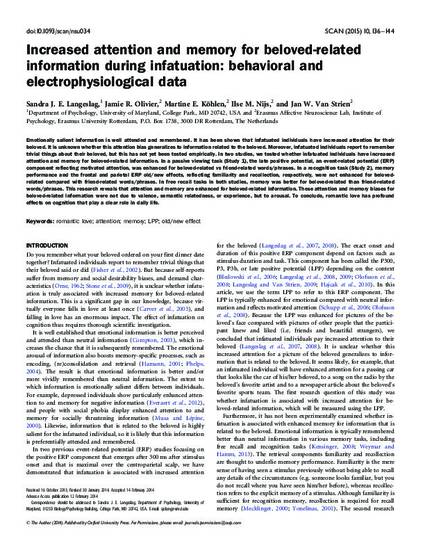
- Psychology,
- Neuropsychology,
- Sandra Langeslag,
- Romantic Love,
- Attention
Emotionally salient information is well attended and remembered. It has been shown that infatuated individuals have increased attention for their beloved. It is unknown whether this attention bias generalizes to information related to the beloved. Moreover, infatuated individuals report to remember trivial things about their beloved, but this has not yet been tested empirically. In two studies, we tested whether infatuated individuals have increased attention and memory for beloved-related information. In a passive viewing task (Study 1), the late positive potential, an event-related potential (ERP) component reflecting motivated attention, was enhanced for beloved-related vs friend-related words/phrases. In a recognition task (Study 2), memory performance and the frontal and parietal ERP old/new effects, reflecting familiarity and recollection, respectively, were not enhanced for beloved-related compared with friend-related words/phrases. In free recall tasks in both studies, memory was better for beloved-related than friend-related words/phrases. This research reveals that attention and memory are enhanced for beloved-related information. These attention and memory biases for beloved-related information were not due to valence, semantic relatedness, or experience, but to arousal. To conclude, romantic love has profound effects on cognition that play a clear role in daily life.
